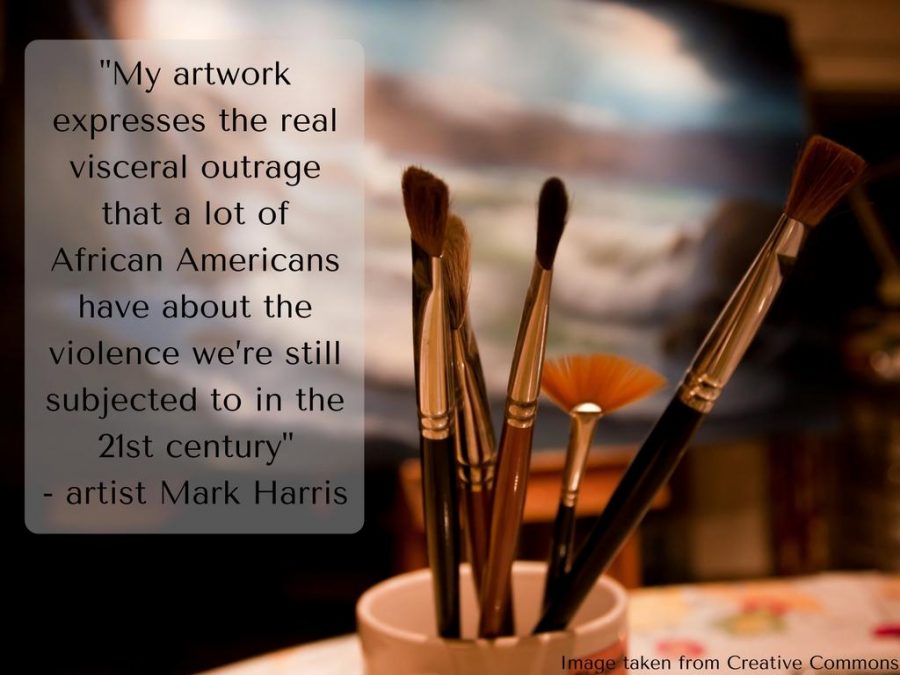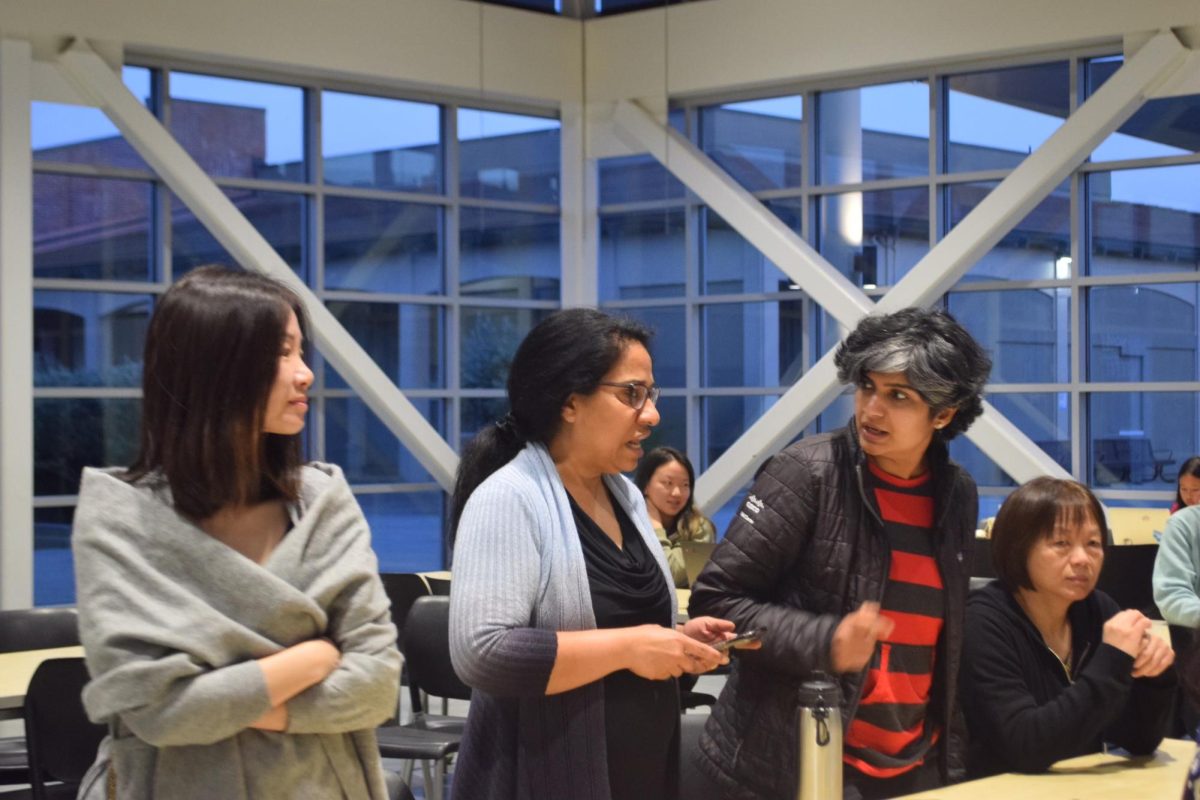In light of black history month, the director of Silicon Valley/San Jose branch of the National Association for the Advancement of Colored People (NAACP), Jeff Moore, asked artist Mark Harris to create a collection of artwork for the lobby of the administrative offices of the East Side Union High School District. According to an article in KQED, “Black History Month Art Removed After Parents Complain”, putting up art in the district office has been an annual tradition for the past three years and, up until now, there has never been any conflict.
In past years, the artwork consisted of cultural artifacts on display, like quilts or books that represent African American History, according to article in KQED. This year, however, Harris put together a collection of 11 paintings that were more controversial.
“My artwork expresses the real visceral outrage that a lot of African Americans have about the violence we’re still subjected to in the 21st century,” Harris said. “I would say it’s agitprop. It’s definitely something thought-provoking. It’s not something you’re going to walk by and not have a second thought about”

Not everyone agreed with this, however. The paintings sparked outrage amongst a few parents because of the controversial political tones of the paintings, one of which featured images of different children holding up signs saying, “Jail all racist cop killers” and “jail killer cops”. As a result, the art was taken down after only a few hours.
Art teacher Tyler Cripe agrees with the idea of avoiding conflict by taking the paintings down, but also feels that art should be for expressing free speech.
“I can see why they would make that choice to take it down and put something else up, but there are parallels to that,” Cripe said. “Art is free speech. Sometimes it’s wrong and sometimes it’s right.“
According to KQED, District superintendent Chris Funk believes that the school environment is not the place for political expression.
“I had no intention to embarrass or harm Mr. Harris,” Funk said. “He seems to be a very talented artist. I’m sorry he got caught up in a situation where Mr. Moore was not upfront about what his motives were and what his expectations were. I didn’t approve the art. I didn’t approve the artist. I didn’t have a chance to review the art beforehand. It was just — smack, hit you in the face — when you walked in. That’s why I took it down.”
Moore, on the other hand, was enraged when the artwork was taken down. Moore said that he went into the office to inform the superintendent of the paintings, but that Funk was in a meeting.
“How many people were offended? How many people were upset?” Moore said. “White supremacy is a topic of conversation right now. I thought this was timely.”
Vice president of Art Club senior Jasmine Chang believes that the art shouldn’t have been censored, as it allows for the freedom of expression. According to Chang, political propaganda is most often expressed through art more often than words, which allows people to express themselves in ways that other types of expression aren’t able to do.
“I think that [Harris’s paintings] shouldn’t be censored…. I don’t think it should be taken down. I think people do have the freedom of expression…It’s a pity that it became this way,” Chang said.
Although Cripe agrees with Chang in that he believes that art should be a gateway for expression, he also believes that by putting the controversial paintings in what Cripe calls a less “safe” place, Harris’ collection had more of an impact. According to Cripe, the act of taking down the art brought more attention to Harris’ collection.
“If you put it online it’s too noisy. If you put it in a museum it’s too safe,” Cripe said. “Even though the work got taken down, we’re talking about it. So maybe that’s the point.”








